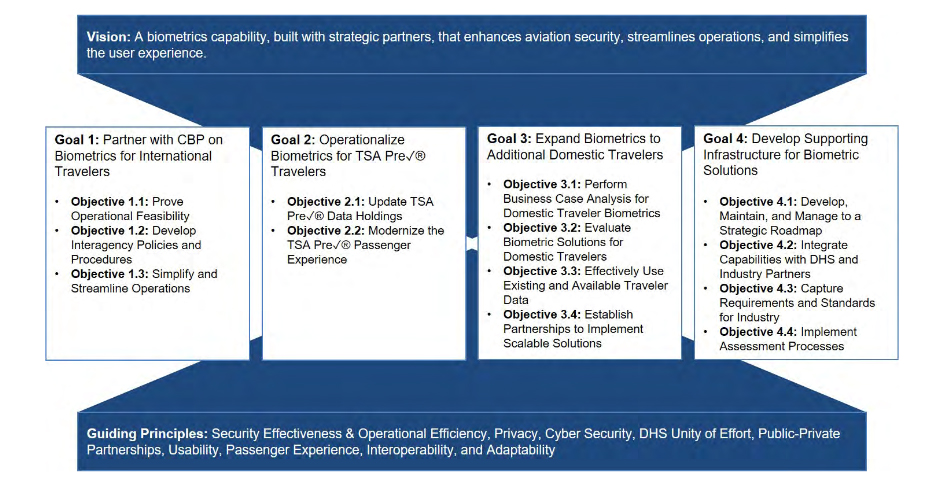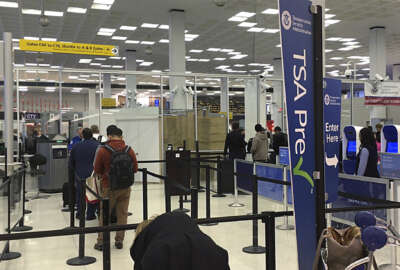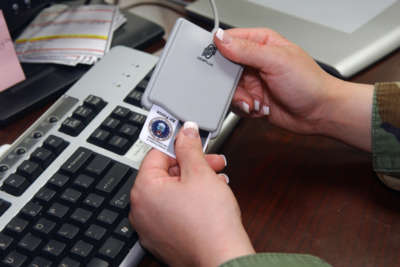 Exclusive
Exclusive TSA’s biometric roadmap details future of identity verification
A current collaboration on facial recognition technology between the Transportation Security Administration and Customs and Border Protection will eventually scale...
Best listening experience is on Chrome, Firefox or Safari. Subscribe to Federal Drive’s daily audio interviews on Apple Podcasts or PodcastOne.
A current collaboration on facial recognition technology between the Transportation Security Administration and Customs and Border Protection will eventually scale to all domestic air travel. TSA’s new biometric roadmap outlines exactly how the agency plans to implement this technology at airports across the country.
The roadmap details four goals on the path to implementing biometric identity verification:
- Partner with CBP on biometrics for international travelers.
- Operationalize biometrics for TSA Precheck travelers.
- Expand biometrics to additional domestic travelers.
- Develop supporting infrastructure for biometric solutions.

TSA has already been working on the first goal for some time. CBP and TSA have been testing facial recognition systems at certain airports, including Dulles International and Los Angeles International, collecting biometrics from departing foreign visitors.
TSA said in a press release that it’s also partnering with CBP and Atlanta International to begin piloting its first biometrical terminal, using facial recognition for self-service bag drop, identity verification and boarding processes.
“All we’re doing is really just comparing you against your passport photograph,” John Wagner, deputy assistant commissioner for the Office of Field Operations at CBP told the Federal Drive with Tom Temin. “Your picture is being taken in a place where today you would normally present your physical passport booklet. So we’re just using a computer algorithm to help us make that decision.”
Every time a foreign national comes into the country, CBP takes fingerprints and a photograph. This helps them assemble a gallery of photos from travel documents. Then, when an airline advises CBP that the individual will be on a flight, CBP can check facial images against this gallery of photos. Currently, Wagner said, the algorithms have a high match rate, with a percentile in the high-90s.
And CBP and TSA don’t worry about the system being fooled by cosmetic changes. People get older, they can gain or lose weight, grow a beard, wear different makeup or hairstyles to alter their appearance, but none of that changes certain dimensions of the face, like the distance between the eyes or ears, or the shape and structure of the nose.
And in many situations, the system is as simple as a camera. In some locations it may be hooked up to an iPad. In other airports, it may be part of a self-boarding gate. However it’s implemented, Wagner said it’s being tied into airport modernization plans wherever possible.
Currently, Wagner said American travelers flying internationally can choose to opt in or out of the program. But eventually, TSA wants to expand the program to all domestic travelers, even though most don’t have or use passports. But most do have forms of state or local identification — those photos could be used to create a much larger database if CBP can work out the necessary data-sharing agreements. TSA is also considering “alternative opt-in approaches” for domestic air travel.
TSA Precheck will be the bridge between these two goals. The opt-in program allows TSA to collect more information on an individual than would ordinarily be necessary, including a background check and fingerprinting. In return, individuals are subject to less invasive security measures, hypothetically speeding their journey through airport security.
All this makes Precheck, which already includes some biometric capabilities with fingerprinting, a natural second step toward TSA’s ultimate goal. Adding facial recognition to the Precheck program will help TSA’s ability to build a database for its facial recognition system, while allowing TSA to incrementally expand the overall biometrics program.
This is part of an effort to reduce “friction” in air travel security; in other words, every time you interact with a TSA or CBP officer in an airport, the process slows down. Biometrics can’t entirely replace personnel, however. You’ll still have to speak to a customs officer, for example, to declare items you bring back into the country.
But TSA and CBP are working to automate the identity verification process.
Copyright © 2025 Federal News Network. All rights reserved. This website is not intended for users located within the European Economic Area.
Daisy Thornton is Federal News Network’s digital managing editor. In addition to her editing responsibilities, she covers federal management, workforce and technology issues. She is also the commentary editor; email her your letters to the editor and pitches for contributed bylines.
Follow @dthorntonWFED





